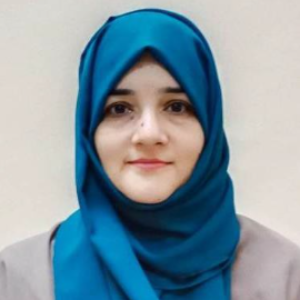Title : Visible-light photocatalysis for wastewater treatment
Abstract:
Photocatalysis is considered as one of the potential advanced oxidation processes for the de-pollution of wastewater. In particular, dye-contaminated wastewater is not only polluting the environment but causes serious health risks to both human and aquatic biota. This necessitates the development of efficient methods to remove dyes from contaminated effluents before their release in the environment. Titanium dioxide is the most widely used catalyst for the dye’s degradation in photocatalysis due to its low cost, thermal stability, chemical stability, huge surface area and non-toxicity. The present work reports a one-pot synthesis of non-metal/transition metal co-doped TiO2 nanocomposites for photocatalytic degradation of reactive azo dye from aqueous solution. Various derivatives of TiO2 nano photocatalysts as S@TiO2 (singly-doped), and Mn/S@co-doped TiO2 with different weight percent were successfully synthesized and analyzed for detailed material characterization. The results revealed that S/Mn co-doped TiO2 nanocomposite exhibited high surface area, large pore volume and enhanced optical properties than undoped and S-doped TiO2. Furthermore, the photoactivity of TiO2 nanoparticles was tested for Reactive Blue photocatalytic degradation. The co-doped nanocomposites (Mn/S@TiO2) manifested remarkable photocatalytic activity for the degradation of Reactive Blue dye under visible-light irradiation. The optimum degradation efficiency attained for reactive blue with Mn/S@TiO2 nanocomposites was 92% in a short time of ~70 min. The significant degradation values and kinetic rate constant values strongly suggested that co-doped TiO2 degraded Reactive Blue at a higher rate than did undoped and S-doped TiO2. In addition, Mn/S@TiO2 catalyst can be effectively employed for the degradation of emerging contaminants from industrial wastewater.
Audience Take Away:
• Facile synthesis methodology for nanocomposite preparation, their structure-property relationship and catalytic behavior can be utilized in water de-pollution processes.
• Nanomaterial synthesis strategies and material characterization is an applied advanced level subject that could phenomenally shape the graduate level curricula.
• The learned ideas can equally be effective for audience in their job/teaching because the said-topic have potential both in applied research and teaching, as mentioned above.
• The progressive depletion of fresh water resources has surged the development of wastewater treatment strategies. The presented topic is providing viable solution to wastewater treatment which can be effectively applied for decontamination of a wide range of organic and inorganic emerging contaminants from wastewater. It will further be beneficial for adopting (i) one-pot synthesis of nanocomposites at possibly low temperature (ii) visible-light active photocatalyst varieties.




